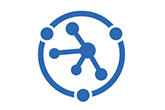In the short time since its launch in February 2016, Microsoft (MS) Azure IoT Hub has earned a prominent place as one of the top IoT platforms on the market. It leads nearly every tech list and shows promise of continuing its gain in adoption as it adds new capabilities and features. The more recently launched Azure Device Provisioning Service (September 2017) appears to be headed for the same industry-wide acceptance.
GlobalSign’s IoT team has seen an increasing number of customers choosing the Azure IoT Hub platform for its purpose-built IoT infrastructure, integrated environments, developer tools, and Platform as a Service (PaaS) capabilities. An interesting aspect of MS Azure IoT Hub is its focus on security, which it takes very seriously. It uses public key infrastructure (PKI) and Device Certificates as a standard authentication mechanism for devices – a methodology we believe to be the de facto credential for IoT identity Management. In fact, PKI’s Role in Securing the IoT is a principal we’ve adhered to for years.
Valid identity credentials are necessary to connect devices to the Azure IoT Hub and Device Provisioning Service. GlobalSign’s IoT Identity Platform and IoT Edge Enroll device enrollment software provide those credentials with device identity provisioning and identity lifecycle management for devices or endpoints. GlobalSign’s platform enables each device or endpoint to enroll and receive a unique device identifier via an X.509 digital certificate, a strong device identity that can be authenticated by Azure IoT Hub and Azure Device Provisioning Service.
Because GlobalSign’s IoT Identity Platform and IoT Edge Enroll are highly scalable, capable of issuing over 3,000 certificates per second and millions per day, they are ideally suited to the high-volume Azure IoT Hub ecosystem. Customers eager to test a proof of concept (PoC) with low volume certificate issuance and then rapidly scale to thousands or millions of certificates in full production, will find the GlobalSign and Azure integration a smooth path to success.
To help support this rapidly growing IoT ecosystem in Azure, GlobalSign has created an integration guide for developers that includes the PoC and the engineered solution for GlobalSign’s integration with both MS Azure IoT Hub and Azure Device Provisioning Service. In it, we share process and code samples so customers can facilitate their own integrations to get PoC validation quickly.
The complimentary GlobalSign/Azure IoT Integration guide is available as a pdf download.
“Many of our IoT customers are electing to connect to Azure IoT Hub as their IoT cloud service of choice,” said Lancen LaChance, GlobalSign’s Vice President, IoT Product Development. “By developing a solution guide that helps developers validate the integration, and sharing that solution with our customers, we’re providing a valuable resource that eliminates integration obstacles, shortens integration time, and reduces time-to-market.”
This solution guide serves well as a supplemental resource to understand Azure IoT Hub's PKI security model, but more importantly provides concrete guidance and POC code to enable it in any IoT environment.
Time to get going on the road to IoT security. Download the full integration guide and take the next step!






